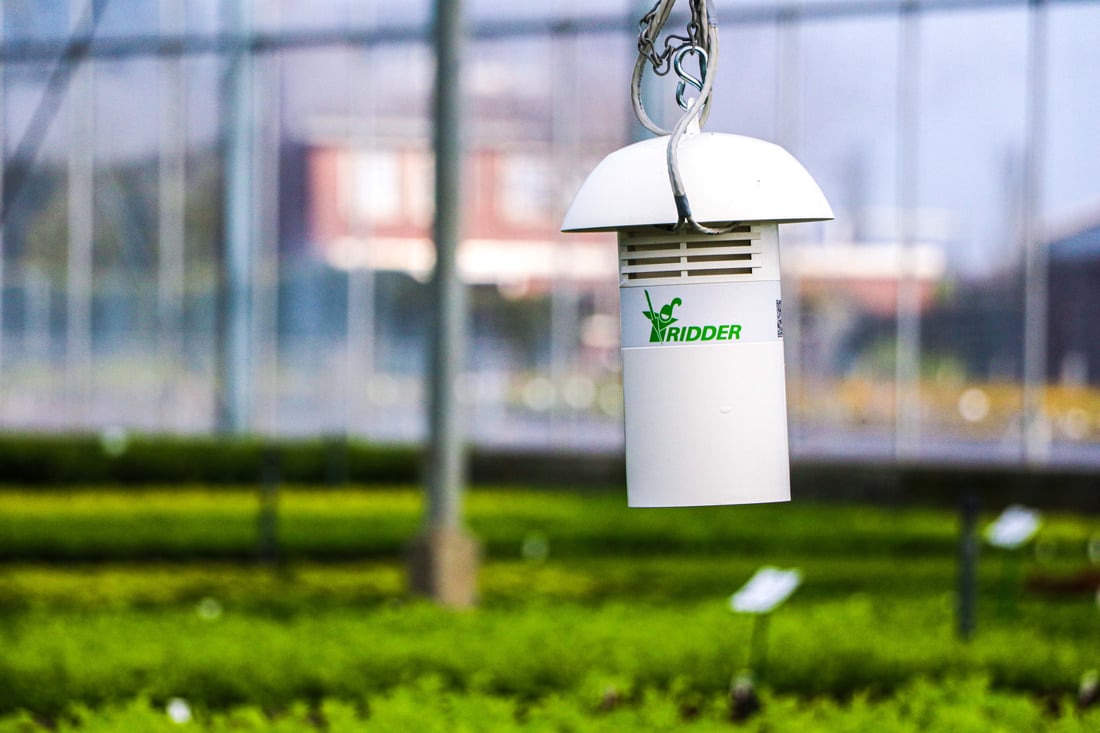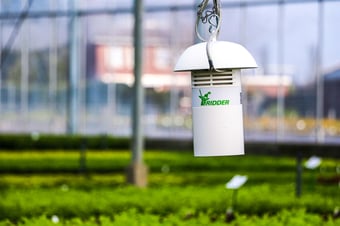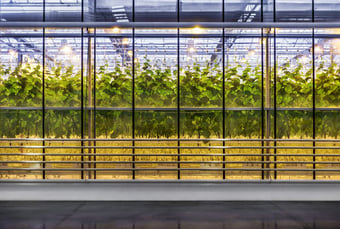This blog outlines the standard, and more advanced measurements that weather stations monitor, and how they can be used to optimise the conditions in the greenhouse, and maximise results.
What is a weather station and how does it contribute to an optimal climate?
Every grower knows that the climate conditions in their greenhouse are vital to plant cultivation. But what’s equally as important is understanding and anticipating the outside climate and weather conditions. This informs what action growers need to take to support their plants and maintain an ideal greenhouse climate.
A weather station takes various, accurate, and real time readings of weather conditions outside the greenhouse. The standard measurements are wind speed, wind direction, rain detection, temperature and radiation. All these factors have a direct effect on how the climate in the greenhouse behaves.
For example, a lot of radiation from the sun for example increases the temperature in the greenhouse, which increases the plant photosynthesis, transpiration and overall plant activity. That’s why radiation measurement is one of the most important weather station measurements for plant growth.
Weather station measurements of the speed and direction of the wind give input for air exchange rates,and also tell growers whether they can expect humid or dry wind. This then informs whether growers, which windows they need to open or completely close the greenhouse to maintain temperature and humidity, or keep rain out.
Temperature measurements also tell growers if they need to ventilate more or less the greenhouse to increase or decrease the temperature or control humidity levels. If there is high radiation, growers may need to use their climate screens to shade their crop and prevent damage.
Although not yet a standard measurement of weather stations, humidity sensors are becoming more common. This is important as humidity levels increasingly affect plant growth inside the greenhouse, and with active ventilation using fans can also be very costly for growers to maintain absolute humidity not considering outside conditions. Other sensors now measure irradiation - or in practical terms, the loss of energy in the greenhouse. When it comes to weather stations, the more sensors they have, the more accurate picture they give growers.This helps them adjust conditions for an optimal greenhouse climate.
What is the best set up for a weather station?
A weather station is a vital part of a greenhouse growers set up. How it is configured is an equally important part of the equation.
Growers cannot control the inside the inside climate without knowing what is happening outside the greenhouse. There is no one-size-fits-all set up that will work optimally for every greenhouse, because every greenhouse is different. However, it is true that the optimal weather station set up will include all the standard weather measurements set out above, as well as humidity controls. This is because humidity sensors can significantly increase the accuracy of the overall climate control.
Humidity is included as standard with Ridder weather stations, as it’s very important in influencing growing conditions. Having a barometric sensor to measure air pressure also increases the accuracy of the reading for humidity levels and CO2 levels. This is also something that is included with Ridder weather stations as an additional measure that enhances accuracy.
How can weather station settings help growers get the most out of their specific greenhouse?
The most optimal settings specific for each greenhouse and climate will depend on the individual greenhouse and important variables such as:
- location - is it in a warm or cool climate? At high or low elevation?
- whether climate screens and lighting are being used
- what kind of crop is being grown in the greenhouse
As a general rule however, individual recommendations vary widely depending on the type of greenhouse, crop, how high-tech and low tech the greenhouse is. One recommendation that is applicable to all greenhouses is the maintenance of the weather station and climate control sensors. This is incredibly important. The schedule of cleaning sensors (such as rain sensors, radiation sensors) is vital to ensure the high performance of the weather station. Inaccurate reading can derail a growing strategy.
As weather stations are exposed to the elements, they experience wear and tear. It’s wise to get them regularly cleaned, checked and even have a back-up or secondary weather station that can be switched over automatically if there is a temporary outage or breakage. This is important to ensure you don’t need to go without a weather station for even a minute, and to ensure the continuity of optimal growing conditions within the greenhouse climate.
Find out more about how smart process automation can create the optimal conditions for greenhouse growing, download Ridder’s Process Automation Roadmap.




